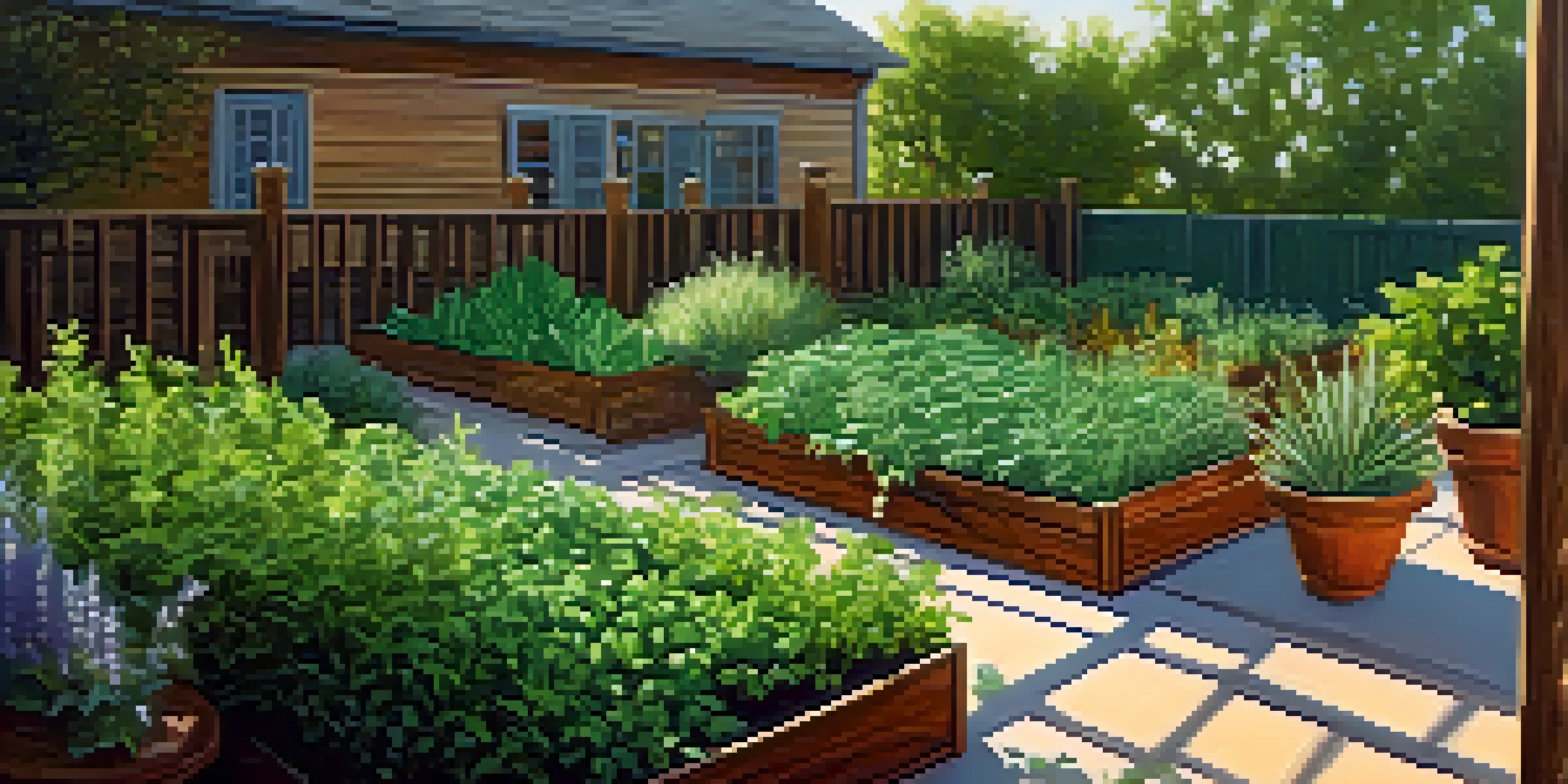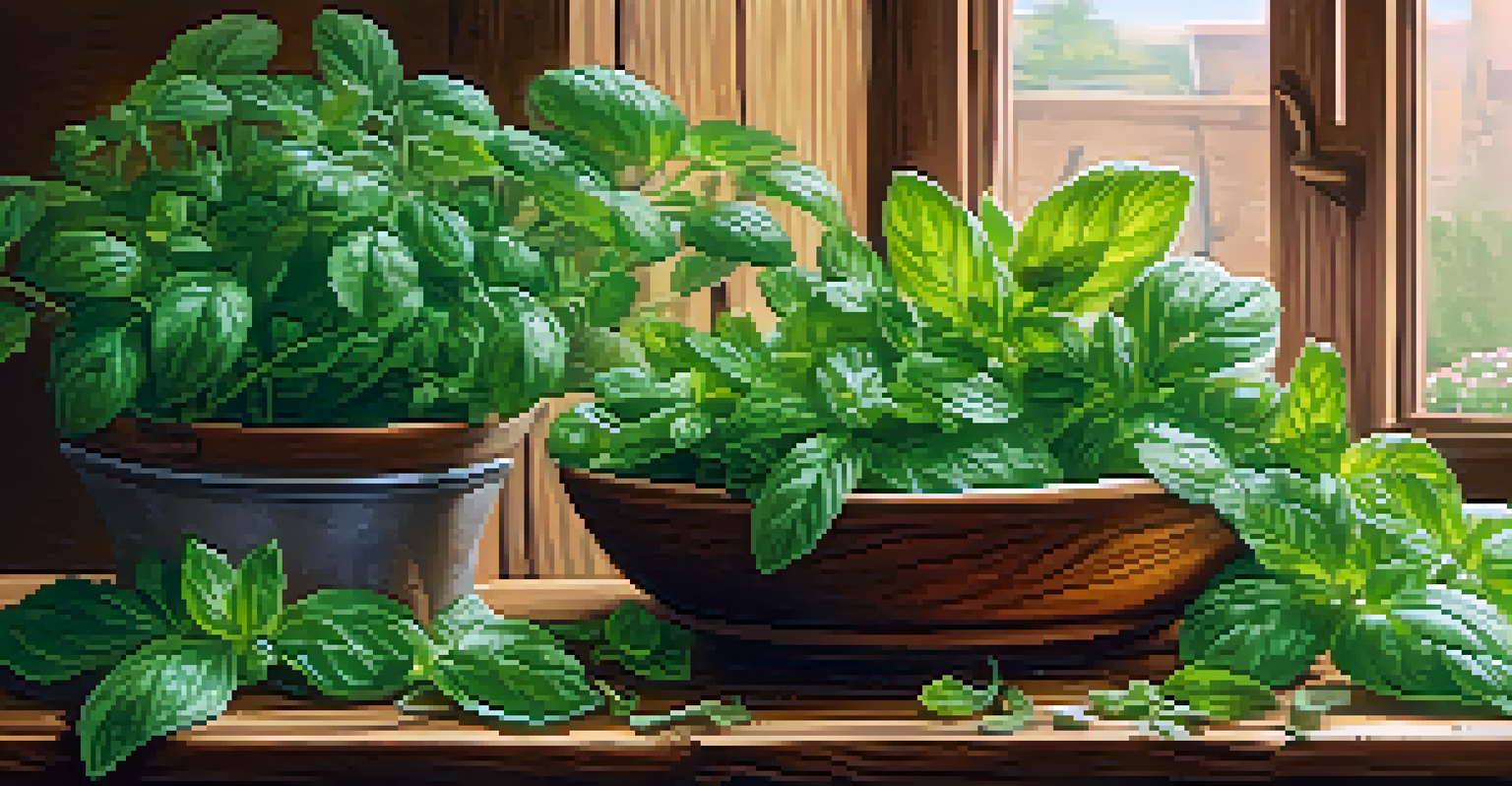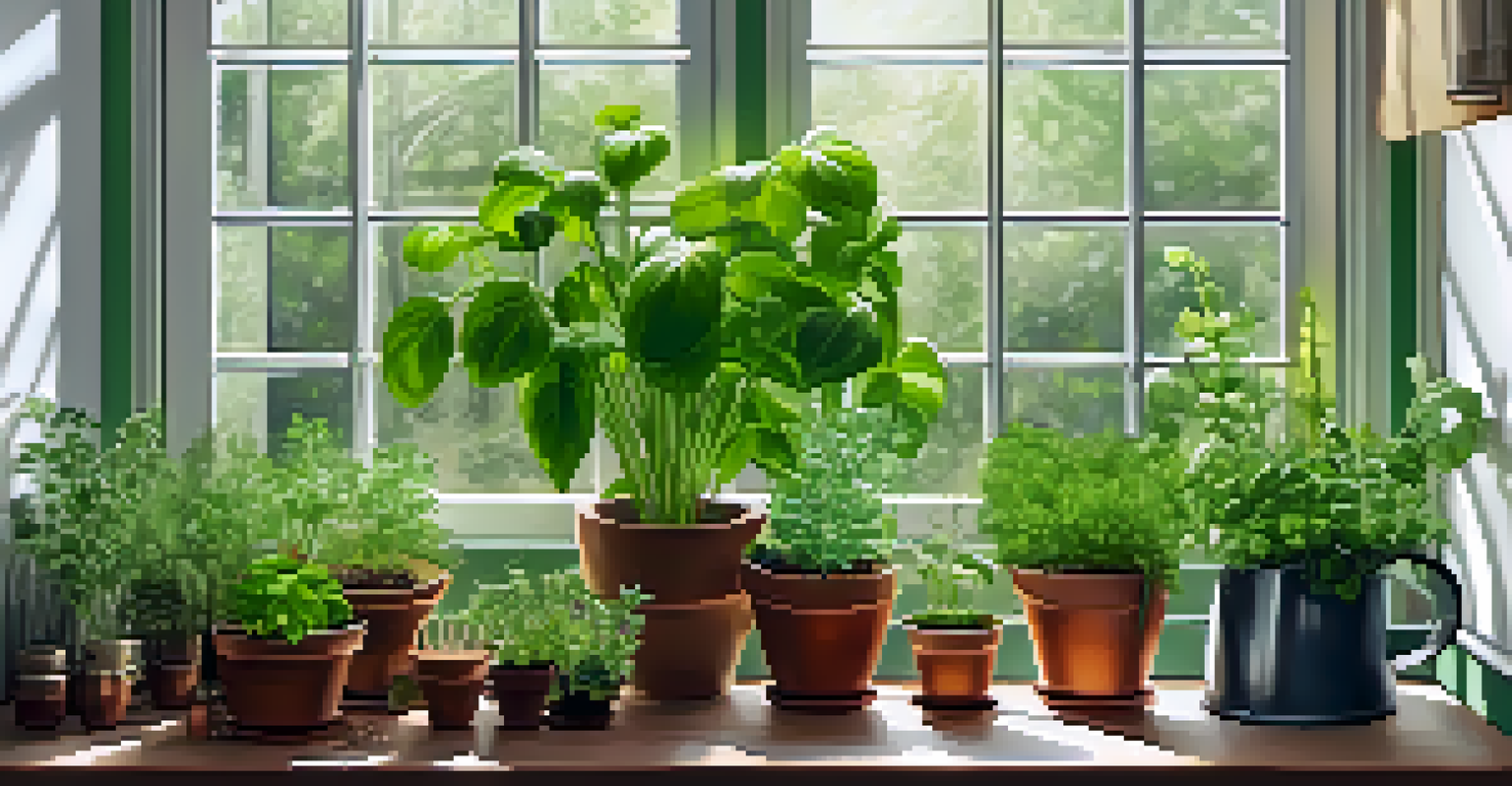Herb Gardening 101: Tips for Growing Culinary Herbs at Home

Choosing the Right Herbs for Your Garden
Starting your herb garden begins with selecting the right herbs. Consider what you enjoy cooking with the most; popular choices include basil, rosemary, and cilantro. Each herb has its own unique flavor profile and culinary use, so think about your favorite dishes.
Herbs are the friend of the cook, and the gardener's delight.
Additionally, some herbs thrive better in specific climates or conditions. For example, if you live in a hot area, Mediterranean herbs like thyme may flourish. Understanding the climate in your region will help you make informed choices for a successful garden.
Lastly, consider the space you have available. Some herbs, like mint, can spread quickly and may need more room. Planning ahead will ensure that your herbs not only grow well but also complement each other in your garden.
Understanding Herb Growing Conditions
Herbs generally prefer well-draining soil and plenty of sunlight. Most culinary herbs thrive in at least six hours of sunlight each day, so choose a sunny spot in your garden or on your balcony. If sunlight is limited, consider growing herbs indoors with a grow light.

Soil quality is equally important; a good mix should be rich in organic matter. You can enhance your garden soil by adding compost, which provides nutrients and improves drainage. This ensures your herbs remain healthy and flavorful.
Choose Herbs You Love to Cook With
Select herbs that enhance your favorite dishes, such as basil, rosemary, and cilantro, for a more enjoyable gardening experience.
Lastly, be mindful of watering. While herbs need moisture, overwatering can lead to root rot. A good rule of thumb is to check the top inch of soil; if it feels dry, it’s time to water. This balance will keep your herbs thriving.
Planting Your Herbs: Timing and Techniques
Timing is key when it comes to planting your herbs. Most herbs can be sown directly into the garden after the last frost, which varies depending on your location. For a head start, consider starting seeds indoors a few weeks prior to planting outside.
The best way to ensure a successful garden is to plant what you love to eat.
When planting, space your herbs appropriately to allow for growth. For instance, basil should be spaced about 12 inches apart to prevent overcrowding. This not only promotes healthy growth but also improves air circulation, which helps prevent diseases.
If you're using pots, ensure they have drainage holes to prevent water accumulation. You can use high-quality potting soil for container gardening, which will support healthy growth. Remember, the right planting technique sets the foundation for a bountiful herb harvest.
Caring for Your Herbs: Maintenance Basics
Regular maintenance is essential for a thriving herb garden. This includes watering, weeding, and pruning your herbs to encourage growth. Make it a habit to check on your plants weekly, as this will help you catch any issues early.
Fertilization can also enhance growth, but it's best to use organic options for culinary herbs. A diluted liquid fertilizer every few weeks during the growing season can provide the necessary nutrients without overwhelming the plants.
Provide Ideal Growing Conditions
Ensure your herbs have well-draining soil, plenty of sunlight, and a proper watering routine to thrive.
Lastly, don’t forget about pest control. Many pests are attracted to herbs, so inspect your plants regularly. Employing natural pest control methods, like introducing beneficial insects, can keep your herbs healthy without harmful chemicals.
Harvesting Your Culinary Herbs for Best Flavor
Harvesting your herbs at the right time is crucial for maximizing flavor. Most herbs are best harvested in the morning after the dew has dried but before the sun is too hot. This timing preserves their essential oils and flavor profiles.
When harvesting, use sharp scissors or pruning shears to cut the stems cleanly. Aim to leave at least one-third of the plant intact to encourage regrowth. Regular harvesting will stimulate the plants to produce more leaves, ensuring a continuous supply.
Additionally, consider using the 'cut and come again' method for leafy herbs. This means you cut the outer leaves while allowing the inner ones to flourish. By doing this, you can enjoy fresh herbs throughout the growing season.
Preserving and Using Your Homegrown Herbs
Once you've harvested your herbs, it's time to enjoy them in your cooking! Fresh herbs can elevate a dish, adding depth and flavor that dried herbs simply can't match. Experiment with different combinations to discover your favorite pairings.
For those times when you have an abundance, preserving your herbs is a great option. You can dry them by hanging them upside down in a dark, dry place, or freeze them in ice cube trays with water or oil for easy future use. This way, you won't waste any of your precious harvest.
Harvest and Preserve for Flavor
Harvest herbs at the right time and explore preservation methods to maintain their fresh flavors for future cooking.
Remember, using your herbs creatively can add excitement to meals. Try making herb-infused oils, adding them to salads, or using them in marinades. The options are endless, and your culinary creations will surely impress!
Common Challenges in Herb Gardening and Solutions
Like any gardening endeavor, herb gardening comes with its challenges. Common issues include pests, diseases, and environmental stress such as drought or excessive rain. Understanding these challenges can help you find effective solutions.
For pest problems, consider companion planting; certain plants can deter pests naturally. For example, planting basil alongside tomatoes can help repel harmful insects. Additionally, using neem oil or insecticidal soap can provide safe options for pest control.

If you notice wilting or yellowing leaves, it could be due to overwatering or nutrient deficiencies. Adjusting your watering schedule and checking soil quality will often remedy these issues. Being observant and responsive will ensure your herbs remain healthy and productive.